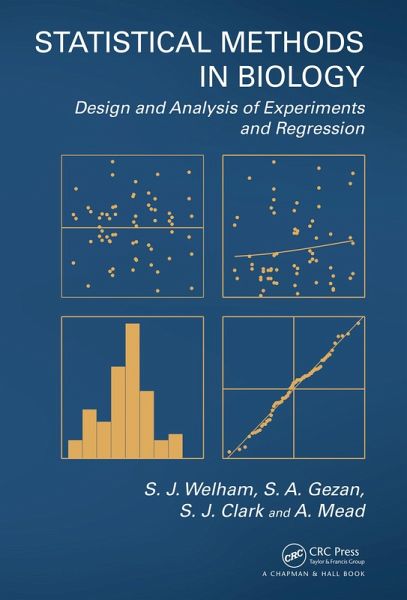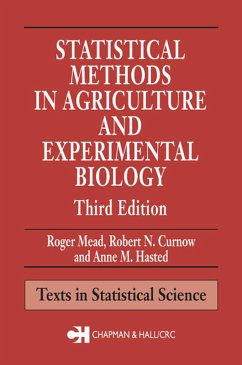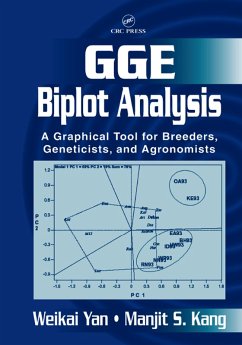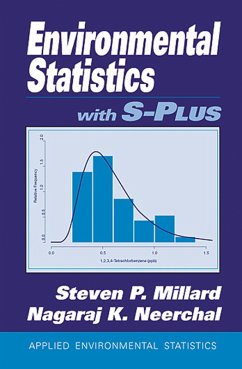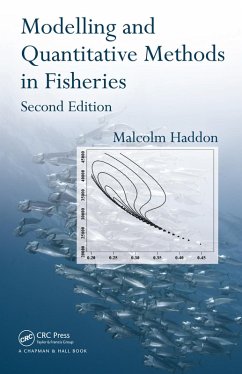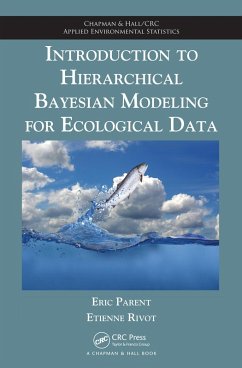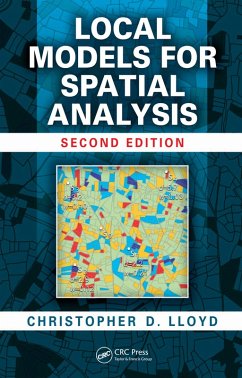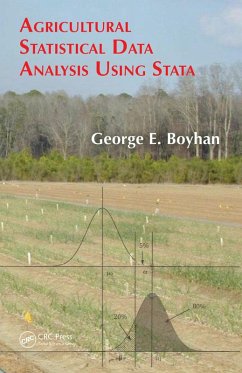"...This is absolutely a traditional statistics textbook, with a strong basis in classical approaches such as blocking, crossed, and nested designs. ... There is much the volume does well. It provides one of the most lucid descriptions of ANOVA that I have come across, and the strong emphasis on coupling experimental design with appropriately planned analysis (often described as important but rarely covered in detail in other statistical publications) make this a textbook that would be useful to those setting up controlled experiments, particularly in the field. Additionally, the provision of plenty of online material and exercises (at http://www.stats4biol.info) for use with GenStat, SAS, and R packages is a useful practical resource. ...
[T]o those who might be looking for a new statistics textbook to work through systematically, it does provide a good reference for anyone who wishes to dissect specific topics in more depth."
-Matthew R.E. Symonds in
The Quarterly Review of Biology, June 2017
"This book is the first serious and successful attempt to teach the general principles underlying sound experimental design and analysis to an audience of students and researchers in biology. The book is written from a strongly applied perspective with lots of real-life examples, but enough mathematical details are given to allow the reader to tailor design and analysis principles to new problems.
The leading principle for analysis of experimental data is the multi-stratum analysis of variance. This powerful principle is part of the Rothamsted tradition of applied statistics to which the authors belong. This book makes statistical highlights from that tradition accessible to life scientists without demanding excessive mathematical skills."
-
Fred van Eeuwijk, Wageningen University and Research Centre
"This book is easy to read. I am very happy to recommend this book to both scientists as a reference, and to students in the area of agricultural and biological plant sciences as a textbook. It covers most aspects of planning experiments and the steps necessary for analyzing the resulting data, bringing the authors' experience to the reader with real examples. It is obvious that the authors have taken great care in framing their conclusions and the possible interpretations of the results."
-
Clarice G.B. Demétrio, Professor of Experimental Statistics, Escola Superior de Agricultura "Luiz de Queiroz," University of São Paulo
"This book connects the underlying principles of design and statistics to good practice in data analysis. It also gives a solid account of the most commonly used and needed statistical methods in experimental biology. It explains concepts in clear, practical, and accessible ways, using real data to illustrate throughout. Mathematical notation is used when necessary but the explanations of key points are in common language.
I would particularly recommend this book for research students. It provides a no-nonsense, gimmick-free account of the key statistical concepts and practices that will allow you to do valid and useful analyses and understand the results from statistical software."
-
Richard Coe, Principal Scientist-Research Methods, World Agroforestry Centre (ICRAF) and Statistical Services Centre
"This book will be invaluable to plant scientists who want to develop their knowledge of statistics. Based on courses developed by the authors, the aim is to provide a deep understanding of the most commonly used experimental designs and their analysis, along with linear regression, and to emphasize the connections between these areas. A background in basic statistics, to the level of t-tests, would be helpful, though a revision chapter is provided. Additional chapters introduce linear mixed models and generalised linear models for counts and proportions.
The authors' extensive practical experience is apparent throughout, particularly in the many interesting examples that pervade the book. A companion website provides associated data and code in GenStat, R, and (soon) SAS. This in itself is a terrific resource, with 50 well-commented programs covering basic analyses and extensions. Each chapter has exercises; these are often challenging and solutions will be provided on the website.
Most of the examples stem from Rothamsted, where all of the authors work or have worked, and the book has something of a Rothamsted 'feel' to it, for example with a strong emphasis on multi-stratum ANOVA to incorporate blocking and other experimental structure even when this is not strictly essential; the benefits of this approach for clarifying more complex designs become apparent as the book progresses.
Everything is here for the plant scientist to develop a really solid understanding of the subject and it is difficult to see how the authors could have done a better job of delivering the book that they set out to write."
-
Martin Ridout, Professor of Applied Statistics, University of Kent
